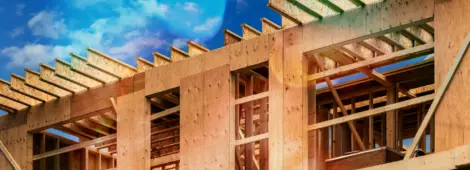
Professional Assessment of External Wall Construction + Cladding
by Ben Cheeseman + Karl Lynch
At Jensen Hughes, we have extensive experience in various types of external wall assessments for various building uses and external wall systems. Our specialist team of MSc qualified SFE member façade engineers with extensive fire engineer experience is backed up by IFE chartered fire engineers to undertake this work. They specialise in the fire safety assessment of external wall construction from, inception to on-site verification.
Our assessment services include:
- Risk-based assessments of existing buildings (FRAEW) in line with code of practice PAS 9980, Fire Risk Appraisal of External Wall Construction and Cladding of Existing Blocks of Flats – Code of Practice
- Compliance-based assessment of existing buildings against Building Regulations, Approved Document B and initial design documents
- Risk mitigation and remedial works review to improve fire safety for existing buildings with a current PAS 9980 assessment conclusion of non-tolerable or high-risk
- Design compliance review for new buildings, including the development of performance-based solutions for compliance with Building Regulations as an alternative to Approved Document B or other prescriptive guidance
- Construction inspections and monitoring for new buildings and remedial works
- The production of EWS1 forms
- Independent third-party review of FRAEW reports
Each external wall construction method consists of a combination of external wall materials, cavity barriers and fire-stopping products. Our assessments have covered a vast array of products and materials for review, including the following:
- Masonry and concrete
- Steel structure
- SFS backing wall
- Timber frame
- Modular construction
- Structural insulated panels (SIPs)
- Pre-cast concrete panels
- Curtain wall systems, Stick and unitised
- Rainscreen systems – Alu/Terrocota/ Steel etc
- Aluminium composite materials (ACM)
- Metal composite panels
- High-pressure laminate panels (HPL)
- External Thermal Insulation Composite System (ETICS), including rendered expanded polystyrene (EPS)
- Brick slip systems
- Timber cladding
- Metal cladding, flat panels and profile sheets
- Stone and reconstituted stone cladding
- Breather membranes
- Seals and sealants - EPDM
- Combustible insulations, polyisocyanurate (PIR), Polyurethane (PUR), EPS, extruded polystyrene (XPS), phenolic foam
- Non-combustible mineral wool and fibreglass insulations
- Closed-state cavity barriers and fire stopping, including mineral wool, intumescent seals, steel, timber
- Open state cavity barriers, including mineral wool with intumescent seals, rigid intumescent barriers, flexible foil intumescent barriers
- Wall systems tested to BS 8414 (and or NFPA 285) and assessed against BR135 or BS 9414
An external wall system comprises a building’s outside wall, including the cladding, insulation and fire break systems. We specialise in external walls, providing Fire Risk Appraisals for External Walls (FRAEW) for all building types.
External Walls + Building Regulations
With a number of regulatory and legislative changes since 2018, emphasis has been placed on the responsibility of building owners, developers, contractors, and designers to prove their buildings meet safety standards. Within these changes, including the Building Safety Act, there has been a significant focus on the risk of fire spread over external walls. Jensen Hughes assists our clients in meeting these legislative responsibilities by keeping up to date with current requirements in this ever-changing field.
PAS 9980 – External Wall Appraisals for Existing Buildings
The current government guidance for undertaking external wall construction assessments on existing buildings is found within PAS 9980, Fire Risk Appraisal of External Wall Construction and Cladding of Existing Blocks of Flats – Code of Practice. This risk-based assessment, known as a FRAEW, includes consideration of a cost-benefit analysis for any remedial works that may be considered necessary.
Our team of experts uses this methodology to undertake external wall assessments for all types of existing buildings, with the primary intent of aiding the building’s fire risk assessment. This approach enables our team to complete an EWS1 form for our clients if requested. As our team includes a large number of Chartered Fire Engineers, we can provide EWS1 forms under options A or B as appropriate.
During our assessment, we undertake a comprehensive review of the building, which typically includes information gathering through documentation review and intrusive on-site verification. This is followed by a holistic assessment of all observed risk factors. We produce detailed reports outlining our assessment at each stage, which our clients can keep on the building’s records.
If the FRAEW concludes that remedial works are required to bring the building up to a suitable standard of fire and life safety, our team can assist in choosing suitable remedial works options and updating the assessments until the building risk can be considered low or tolerable.
While the industry's primary focus on external construction fire safety often centres around residential buildings, there is growing awareness among building owners and responsible persons regarding risks and responsibilities in other commercial-use structures. Our team has experience undertaking similar external wall risk assessments of commercial buildings.
New Buildings
We develop fire strategies for residential buildings of all types and sizes. A key part of this is the design of the external walls, with a focus on the accuracy of design details, product certification documents, and recorded quality assurance during construction. We offer advice from the inception of a project to completion on site.
Our reports include key fire strategy principles for external fire spread in external wall construction. However, as the design develops, our team can provide additional services to review the proposed external wall material and cavity barrier design details. As part of this, we can develop performance-based solutions where appropriate and lead discussions on external wall construction with Building Control and the Fire Service.
During construction, we can visit the site regularly to review the installation of materials, cavity barriers and fire-stopping against the design documents. With each site visit, we provide site inspection reports, advise on any concerns, recommend appropriate remediation, review certifications for any design changes, and follow up on remedial works as needed. Upon completing our assessment, we can issue a signed EWS1 form for the building.
Technical Due Diligence
We conduct Technical Due Diligence (TDD) for buyers and sellers of existing and planned buildings, including large property portfolios, to assist with sales negotiations and mitigate acquisition risks by highlighting any fire-related issues with the external wall and giving a third-party view of the risk.
Litigation and Expert Witness
Our team undertakes compliance assessments for the external wall construction of existing building construction and designs. We have experience assessing against the various past iterations of the Building Regulations guidance to determine compliance with the applicable requirements at the time of construction. These compliance reports have assisted our clients in legal disputes regarding the non-compliance of existing buildings.
Jensen Hughes can supply expert witnesses trained in external wall systems to assist clients' legal counsel during litigation.

As a Mechanical Engineer, Ben has gained diverse experience working in mass manufacturing, consultancy and construction, and is currently focused on façade projects. In addition to managing the design and manufacture of multiple project…

Karl is a seasoned Project Design Lead and Facade Manager with a strong background in facade technical resolution and delivery. With extensive practical and hands-on experience working in construction and engineering, he provides expertise…












